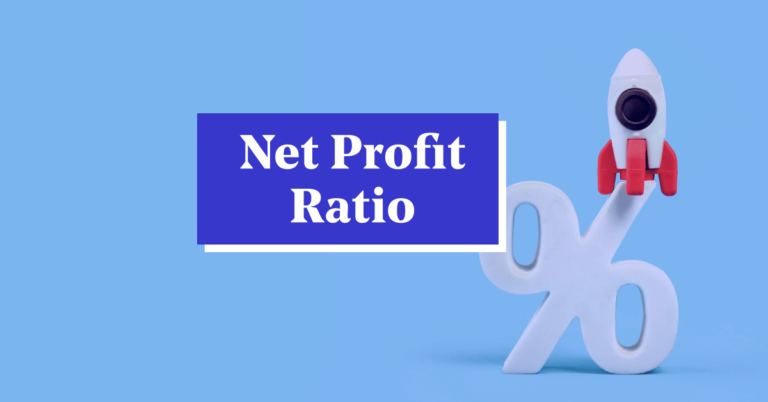In the realm of finance, it’s important to evaluate a company’s leverage to understand its financial health. One of the most critical metrics used to assess this is the Total Outside Liability to Total Net Worth (TOL/TNW) ratio. This ratio helps determine how much a business relies on external liabilities compared to its internal equity. In this blog, we will explore the meaning, calculation, and interpretation of the TOL/TNW ratio, along with its importance for businesses and investors.
What is the TOL/TNW Ratio?
The Total Outside Liability to Total Net Worth (TOL/TNW) ratio is a financial indicator that compares the total external liabilities (debts) of a company with its net worth (shareholder’s equity). The ratio is commonly used to evaluate how much of the company’s assets are funded through debt versus the owners’ equity.
A high TOL/TNW ratio implies that a company is highly leveraged, meaning it relies heavily on debt. In contrast, a low TOL/TNW ratio suggests the company has a strong equity base and a lower dependency on external liabilities.

How to Calculate the TOL/TNW Ratio?
The TOL/TNW ratio is calculated using the following formula:TOL/TNW Ratio=Total LiabilitiesNet Worth\text{TOL/TNW Ratio} = \frac{\text{Total Liabilities}}{\text{Net Worth}}TOL/TNW Ratio=Net WorthTotal Liabilities
Key Components:
- Total Liabilities: This includes both current liabilities (debts that need to be repaid within a year) and long-term liabilities (debts due after one year). Examples include loans, bonds, accounts payable, and other external debts.
- Net Worth: Also known as shareholders’ equity, net worth is calculated by subtracting total liabilities from total assets. It represents the company’s ownership equity or residual value after all liabilities have been paid.
Example (in Indian Rupees):
Let’s say a company has total liabilities of ₹1,00,00,000 (1 crore) and a net worth of ₹50,00,000 (50 lakhs). The TOL/TNW ratio would be calculated as:₹1,00,00,000₹50,00,000=2.0\frac{\text{₹1,00,00,000}}{\text{₹50,00,000}} = 2.0₹50,00,000₹1,00,00,000=2.0
This means that for every ₹1 of net worth, the company has ₹2 in liabilities. A ratio of 2.0 indicates that the company is twice as dependent on external liabilities as it is on its own equity.
Interpretation of TOL/TNW Ratio
The TOL/TNW ratio gives a snapshot of the financial leverage a company uses. It reveals how much of the company’s funding comes from outside debt and how much is supported by the company’s equity. Here’s how the ratio is typically interpreted:
- High TOL/TNW Ratio: If the ratio is high (greater than 2), it means the company is heavily reliant on external debt. This could increase the risk, especially during times of economic downturn or low cash flow.
- Low TOL/TNW Ratio: A lower ratio (less than 1) suggests that the company has more equity than liabilities. This is considered a sign of financial strength, as the company can cover its debts easily.
For example, if the TOL/TNW ratio is 2.0, the company has ₹2 in liabilities for every ₹1 in equity. On the other hand, if the ratio is 0.5, the company has only ₹0.50 in liabilities for every ₹1 in equity, indicating a healthier financial position.
Why is the TOL/TNW Ratio Important?
The Total Outside Liability to Net Worth ratio is critical for a variety of stakeholders:
- Investors: Investors use the TOL/TNW ratio to assess a company’s financial risk. A high ratio suggests a company may be over-leveraged, making it riskier for potential investment. A low ratio, on the other hand, may indicate a more stable investment opportunity.
- Lenders: Banks and financial institutions rely on the TOL/TNW ratio to evaluate a company’s creditworthiness. Companies with a lower TOL/TNW ratio are generally seen as safer and can secure loans at favorable interest rates.
- Business Owners: Business owners use this ratio to monitor their company’s financial health. A rising TOL/TNW ratio could signal that it’s time to reduce debt or raise more equity to ensure long-term financial stability.
- Credit Rating Agencies: These agencies use the TOL/TNW ratio to assess the company’s risk level. A lower ratio often results in a better credit rating, which can lead to easier access to credit at lower costs.
Industry Benchmarks for TOL/TNW Ratio
Different industries may have varying norms for the TOL/TNW ratio, depending on their nature and capital requirements. Here are some general industry trends:
- Capital-Intensive Industries: Companies in industries such as manufacturing, infrastructure, or real estate tend to have higher TOL/TNW ratios due to the significant capital investments required for operations.
- Service-Based Industries: Companies in consulting, IT, or financial services often have lower TOL/TNW ratios as their operations are less capital-intensive and do not require heavy borrowing.
When analyzing the TOL/TNW ratio, it’s important to compare it with the industry average to get a clearer picture of a company’s performance.
5 Key Insights for Financial Stability
- A Ratio Below 1 is Ideal: A TOL/TNW ratio of less than 1 suggests that the company’s equity is larger than its liabilities, which means the business has strong financial stability and can easily meet its obligations.
- Higher Ratios Indicate More Risk: If a company’s ratio exceeds 2, it should be cautious. A higher ratio means the business is heavily reliant on debt and may face difficulties during adverse economic conditions.
- Improving the TOL/TNW Ratio: To improve the TOL/TNW ratio, businesses can reduce their liabilities by paying down debt or increasing equity by issuing shares or retaining profits.
- Creditworthiness Assessment: Lenders prefer companies with a TOL/TNW ratio below 2. A lower ratio indicates better creditworthiness and helps secure loans at more favorable terms.
- Monitor Regularly: It’s important for businesses to regularly monitor their TOL/TNW ratio to ensure they maintain financial stability and do not become overly dependent on debt.
FAQs
1. What is a good TOL/TNW ratio?
A TOL/TNW ratio between 1 and 2 is generally considered good, as it indicates that the company has a balanced mix of debt and equity financing. However, the ideal ratio can vary depending on the industry.
2. What does a high TOL/TNW ratio indicate?
A high TOL/TNW ratio suggests that the company is relying heavily on external liabilities to finance its operations. This increases financial risk, especially during periods of low cash flow.
3. How can a company improve its TOL/TNW ratio?
A company can improve its TOL/TNW ratio by reducing its liabilities (e.g., paying off debt) or increasing its equity (e.g., issuing more shares or retaining profits).
4. Why is the TOL/TNW ratio important for investors?
Investors use the TOL/TNW ratio to assess a company’s financial leverage and risk. A lower ratio is generally viewed as favorable, as it indicates that the company is less reliant on debt and more financially stable.
5. How does the TOL/TNW ratio affect credit ratings?
Credit rating agencies often consider the TOL/TNW ratio when evaluating a company’s creditworthiness. A lower ratio typically leads to a better credit rating, allowing the company to borrow money at lower interest rates.
Conclusion
The Total Outside Liability to Total Net Worth (TOL/TNW) ratio is a key financial metric that provides valuable insights into a company’s leverage and overall financial stability. By understanding this ratio, businesses can make informed decisions to manage their liabilities, investors can gauge financial risk, and lenders can assess creditworthiness. Keeping a balanced TOL/TNW ratio is essential for long-term business success and financial sustainability.
For more financial tips and expert insights, visit SmartTaxSaver.




